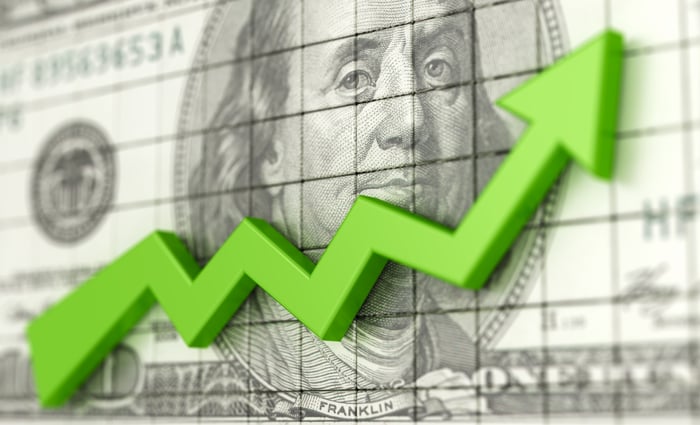Nvidia’s Path to a $10 Trillion Valuation: An Investor’s Overview
Beth Kindig, a technology analyst at the I/O Fund, predicts that Nvidia (NASDAQ: NVDA) could achieve a staggering $10 trillion valuation by 2030. If this optimistic forecast holds true, Nvidia’s worth would surpass the combined current value of strong competitors like Apple, Microsoft, Amazon, and Tesla.
For investors, this prediction suggests significant benefits; Nvidia’s existing market value of $3.5 trillion would need to grow by 185% to hit $10 trillion. Achieving this goal by 2030 would require an annual increase of 19% in share price over the next six years.
Nvidia’s Dominance in the AI Sector
Nvidia currently claims a remarkable 98% market share in data center graphics processing units (GPUs), vital components for speeding up tasks like training large language models. Despite competition from tech giants like Alphabet and chipmakers such as AMD, Nvidia’s GPUs have established themselves as the standard for AI applications.
The foundation of Nvidia’s success was laid back in 2006 with the introduction of its CUDA programming model. This has since evolved into a robust ecosystem of tools for GPU application development. Nvidia has also expanded into complementary data center hardware, including central processing units (CPUs) and specialized networking equipment for AI.
In essence, Nvidia engages in various aspects of the growing AI economy. CEO Jensen Huang emphasizes that Nvidia’s innovation across hardware and software creates an advantageous total cost of ownership for its data center systems. This means that while Nvidia’s chips may have a higher price tag, they often prove more cost-effective than competitors when all factors are considered.

Image source: Getty Images.
Upcoming Innovations: Nvidia’s New Blackwell GPUs
Nvidia recently announced strong financial results for the second quarter of fiscal 2025, ending July 2024, exceeding both revenue and earnings estimates. Total revenue surged by 122% to $30 billion, primarily due to robust data center growth. Non-GAAP earnings rose by 152% to $0.68 per diluted share, with management forecasting 80% revenue growth for the third quarter.
A key development for the company is the upcoming launch of its next-generation GPU, Blackwell, projected to achieve up to four times faster AI training and 30 times faster AI inferencing compared to the previous Hopper architecture. Production of Blackwell began ramping up in the fourth quarter, which is expected to continue into fiscal 2026.
CEO Jensen Huang has called Blackwell “the most successful product” in the company’s history and possibly the computing industry’s. Wall Street shares this optimism, with Blayne Curtis from Jeffries noting that Nvidia is witnessing demand that greatly surpasses its increasing production capabilities.
Moreover, Harsh Kumar from Piper Sandler estimates that sales of AI accelerators could reach $70 billion in 2025, with Nvidia expected to gain a large share of that market as businesses seek Blackwell chips. Kumar also pointed out that Nvidia has historically exceeded expectations during the launch of new products.
Nvidia’s $10 Trillion Vision: Are We There Yet?
Looking ahead, AI accelerator sales are projected to grow at 29% annually through 2030, while spending on AI hardware, software, and services is expected to rise at 37% during the same timeframe. Nvidia is well-positioned to capitalize on these trends due to its diverse involvement in the AI economy.
Additionally, as data centers shift toward accelerated computing, Huang believes that every data center will eventually adopt GPUs. He anticipates cumulative spending in this area to reach $1 trillion over the next four to five years, with data center accelerator sales estimated to increase by 25% annually through 2030, according to Grand View Research.
Wall Street analysts predict Nvidia’s adjusted earnings will rise at an annual rate of 37% through fiscal 2027, which ends January 2027. This estimation implies that the current valuation of 66 times adjusted earnings is reasonable. If Nvidia sustains a similar growth rate of 31% annually over the next six years, it could reach a market value of $10 trillion by mid-2030, with a valuation of 37 times earnings.
Presently, the market values Apple at 37 times earnings, suggesting that Nvidia could have a similar valuation in the future. However, reaching the $10 trillion goal will require almost flawless execution and a bit of luck. For those considering investments, it may be wise to start with a small position now.
Seize this Opportunity Before It Passes
Have you ever felt like you missed out on investing in leading companies? Now might be your chance to reconsider.
Occasionally, our expert analysts issue “Double Down” stock recommendations for companies poised for significant growth. If you think you’ve missed your window to invest, the time to act is now—before it’s too late. The numbers tell a compelling story:
- Amazon: If you invested $1,000 when we doubled down in 2010, you’d have $23,295!
- Apple: If you invested $1,000 when we doubled down in 2008, you’d have $42,465!
- Netflix: If you invested $1,000 when we doubled down in 2004, you’d have $434,367!
Currently, we’re issuing “Double Down” alerts for three outstanding companies, presenting a potentially rare investment opportunity.
See 3 “Double Down” stocks »
*Stock Advisor returns as of November 11, 2024
John Mackey, former CEO of Whole Foods Market, an Amazon subsidiary, is a member of The Motley Fool’s board of directors. Trevor Jennewine has positions in Amazon, Nvidia, and Tesla. The Motley Fool has positions in and recommends Amazon, Apple, Microsoft, Nvidia, and Tesla. The Motley Fool recommends the following options: long January 2026 $395 calls on Microsoft and short January 2026 $405 calls on Microsoft. The Motley Fool has a disclosure policy.
The views and opinions expressed herein are the views and opinions of the author and do not necessarily reflect those of Nasdaq, Inc.

